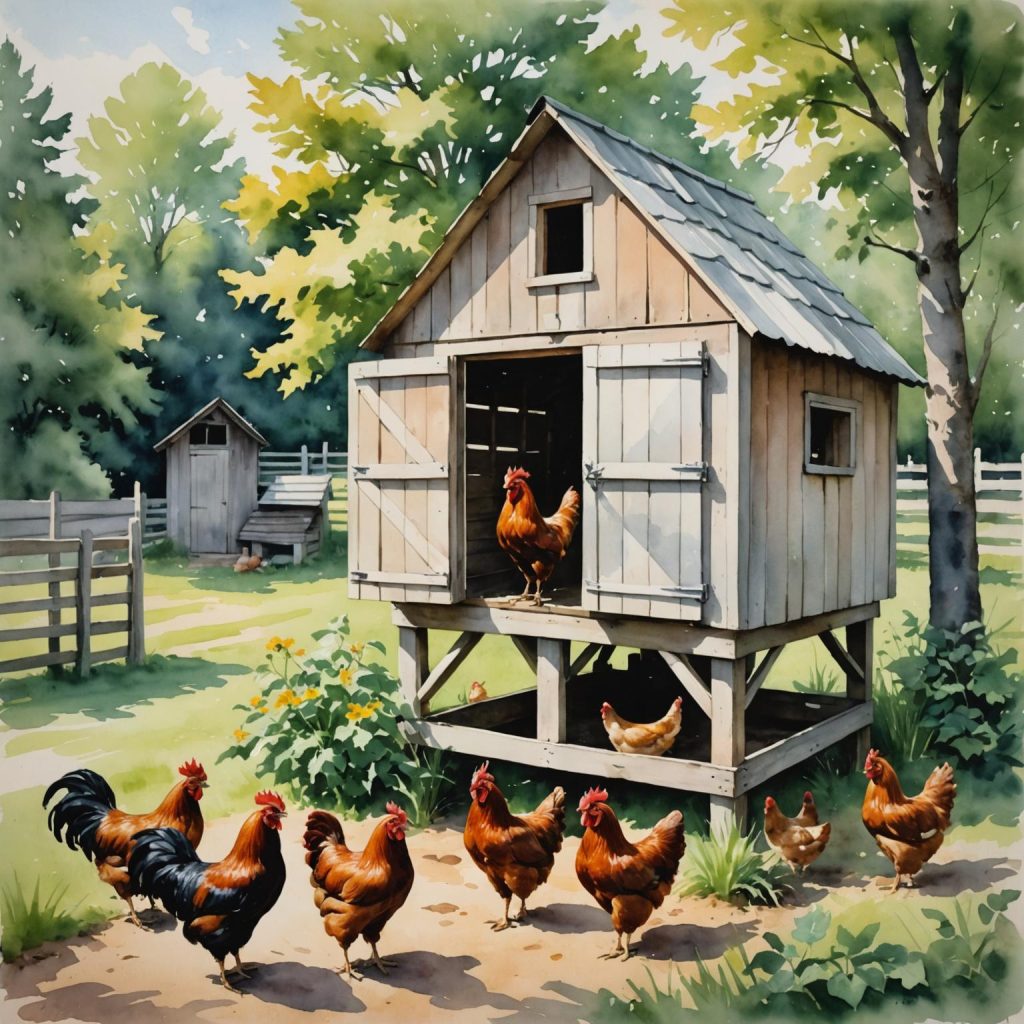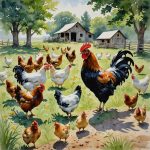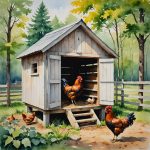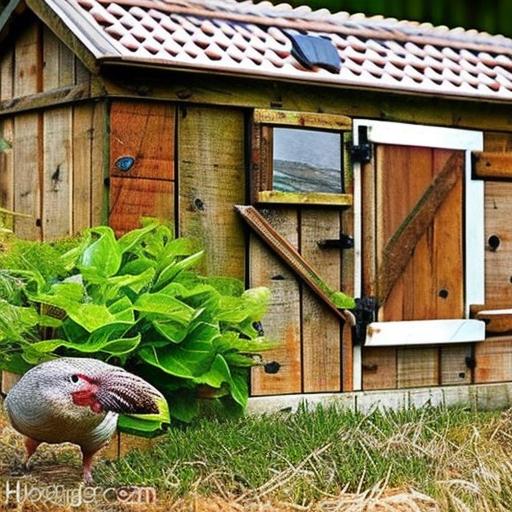Ventilation is crucial to the health and well-being of your flock, yet it can often be overlooked in the design of a chicken coop. Proper ventilation ensures good air quality, regulates temperature, and reduces the risk of respiratory illnesses in your chickens. In this article, we will explore the importance of ventilation in a chicken coop and provide practical tips on how to effectively ventilate your coop to create a cozy and healthy living habitat for your feathered friends.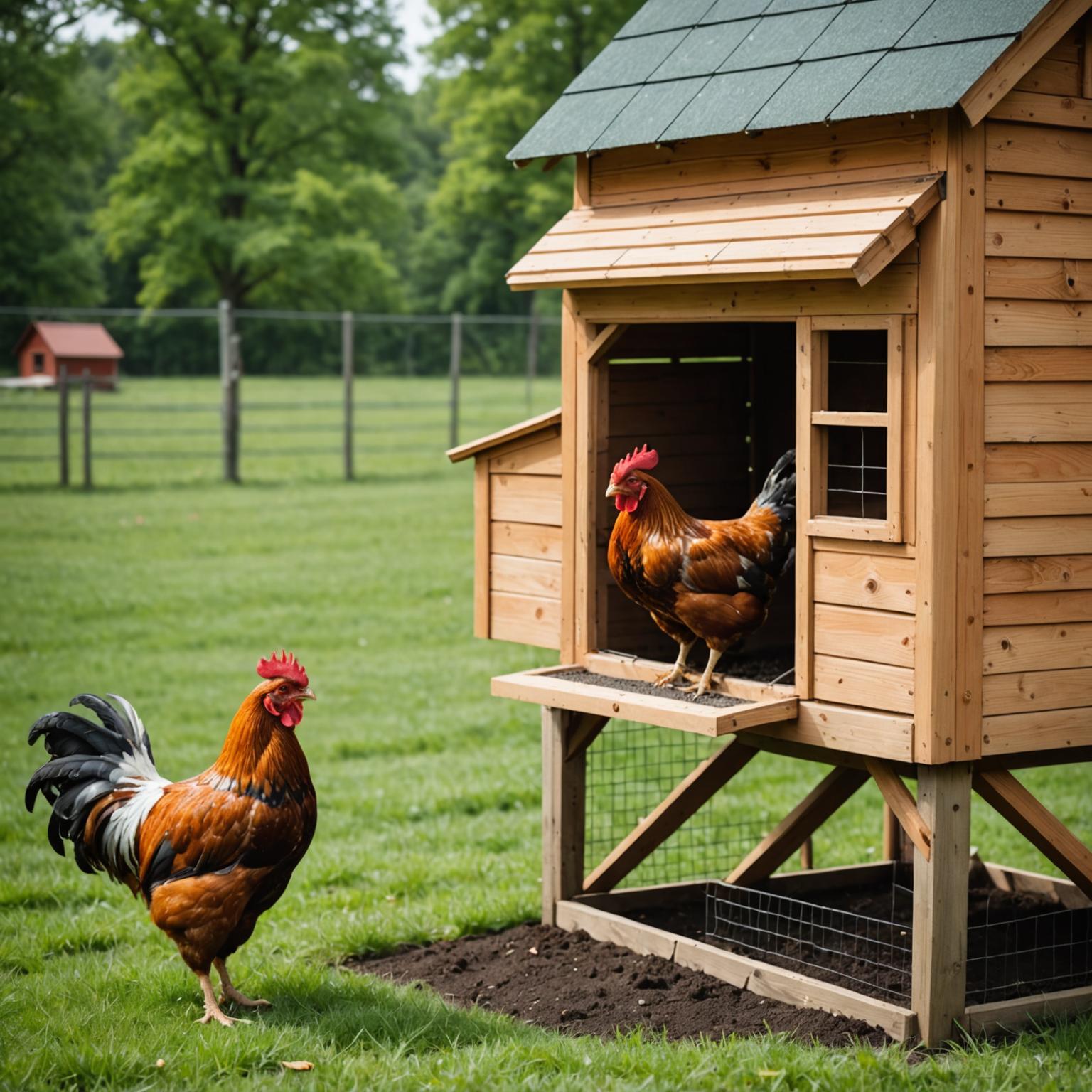
Table of Contents
Ensuring Proper Airflow in Your Chicken Coop
Proper airflow in your chicken coop is crucial for the health and well-being of your feathered friends. Without adequate ventilation, ammonia levels can build up, leading to respiratory issues and other health problems. To ensure your chickens stay happy and healthy, follow these tips to ventilate your chicken coop effectively.
Tips for Ventilating Your Chicken Coop:
- Install windows or vents near the top of the coop to allow hot air and ammonia to escape.
- Use wire mesh screens on windows and vents to prevent predators from entering the coop.
- Consider adding a ceiling fan or exhaust fan to help circulate air within the coop.
- Clean out bedding regularly to prevent the buildup of harmful gases.
Key Factors to Consider When ventilating Your Chicken Coop
Proper ventilation in your chicken coop is crucial for maintaining a healthy environment for your birds. When it comes to ventilating your chicken coop, there are several key factors to consider to ensure optimal air circulation and quality.One crucial factor to keep in mind is the size and layout of your coop. Make sure to have adequate ventilation openings to allow for fresh air to flow in and stale air to flow out.
Another key consideration when ventilating your chicken coop is the placement of the vents. Vents should be strategically placed to allow for cross ventilation, which helps to prevent the buildup of moisture and ammonia. Additionally, consider using wire mesh to cover the vents to keep out predators while still allowing for proper air flow. By taking these key factors into account, you can ensure a well-ventilated chicken coop that promotes the health and well-being of your birds.
Strategies for Effective Ventilation in a Chicken Coop
One effective strategy for ensuring proper ventilation in a chicken coop is to install a combination of windows and vents. These openings should be strategically placed to allow for cross-ventilation, creating a constant flow of fresh air throughout the coop. Windows can be opened during the warmer months to allow for additional airflow, while vents can be utilized during colder weather to prevent the buildup of moisture and ammonia.
Along wiht natural ventilation, it is important to consider the use of mechanical ventilation systems in larger chicken coops. Exhaust fans can be installed to help remove stale air and regulate humidity levels, creating a more comfortable environment for the chickens. It is crucial to regularly clean and maintain these systems to ensure they are functioning properly and effectively removing pollutants from the air. Utilizing a combination of natural and mechanical ventilation methods can help to promote better air quality and overall health for your flock.
Best Practices for Maintaining Air Quality in your Chicken Coop
Proper ventilation is crucial for maintaining air quality in your chicken coop. Without adequate airflow, the buildup of harmful gases such as ammonia can lead to respiratory issues and other health problems for your birds. To ensure a well-ventilated coop, consider the following best practices:
- Install vents: Position vents at both the top and bottom of the coop to allow for proper air circulation.
- Utilize windows: Natural light and fresh air can enter the coop through windows, helping to keep the air inside clean and fresh.
- Use fans: In hot and humid weather, fans can help to cool down the coop and improve air circulation.
In addition to ventilation, it’s important to regularly clean and maintain your chicken coop to prevent the buildup of dust, feathers, and droppings. A clean coop not only improves air quality but also reduces the risk of pests and diseases. Consider the following tips for maintaining a clean coop:
- Remove droppings daily: Scoop up droppings and soiled bedding to prevent the spread of bacteria.
- Change bedding regularly: Replace bedding as needed to keep the coop dry and odor-free.
- Inspect for leaks: Check for any leaks or holes in the roof or walls that could lead to moisture buildup inside the coop.
Q&A
Q: Why is ventilation important in a chicken coop?
A: Ventilation in a chicken coop is crucial for regulating moisture levels,preventing the buildup of harmful gases,and ensuring good air quality for the birds.
Q: How can I improve ventilation in my chicken coop?
A: You can improve ventilation by adding windows, vents, and fans to the coop. It is also important to position these openings strategically to promote airflow.
Q: What are the signs that my chicken coop needs better ventilation?
A: Signs that your chicken coop needs better ventilation include a strong ammonia smell, condensation on the walls, and increased respiratory issues in your birds.
Q: Can I use natural ventilation methods in my chicken coop?
A: Yes, natural ventilation methods such as installing windows and vents, as well as using proper roof ventilation, can be effective in promoting airflow in the coop.
Q: When is the best time to ventilate a chicken coop?
A: Ventilation should be maintained year-round,but it is especially important during hot and humid weather when moisture levels can be high and pose a risk to your birds’ health.
Q: Are there any risks associated with improper ventilation in a chicken coop?
A: Yes, improper ventilation can lead to respiratory issues, mold growth, and even death in extreme cases. it is indeed critically important to monitor and maintain good airflow in your chicken coop at all times.
The Way Forward
proper ventilation is essential for the health and wellbeing of your chickens. by following the tips provided in this article, you can ensure that your coop has adequate airflow to prevent issues such as moisture buildup, ammonia buildup, and respiratory issues. Remember to regularly check and clean the ventilation openings, and monitor the temperature and humidity levels inside the coop.Your feathered friends will thank you for providing them with a comfortable and healthy environment to thrive in. Happy ventilating!
Meet Walter, the feathered-friend fanatic of Florida! Nestled in the sunshine state, Walter struts through life with his feathered companions, clucking his way to happiness. With a coop that’s fancier than a five-star hotel, he’s the Don Juan of the chicken world. When he’s not teaching his hens to do the cha-cha, you’ll find him in a heated debate with his prized rooster, Sir Clucks-a-Lot. Walter’s poultry passion is no yolk; he’s the sunny-side-up guy you never knew you needed in your flock of friends!

